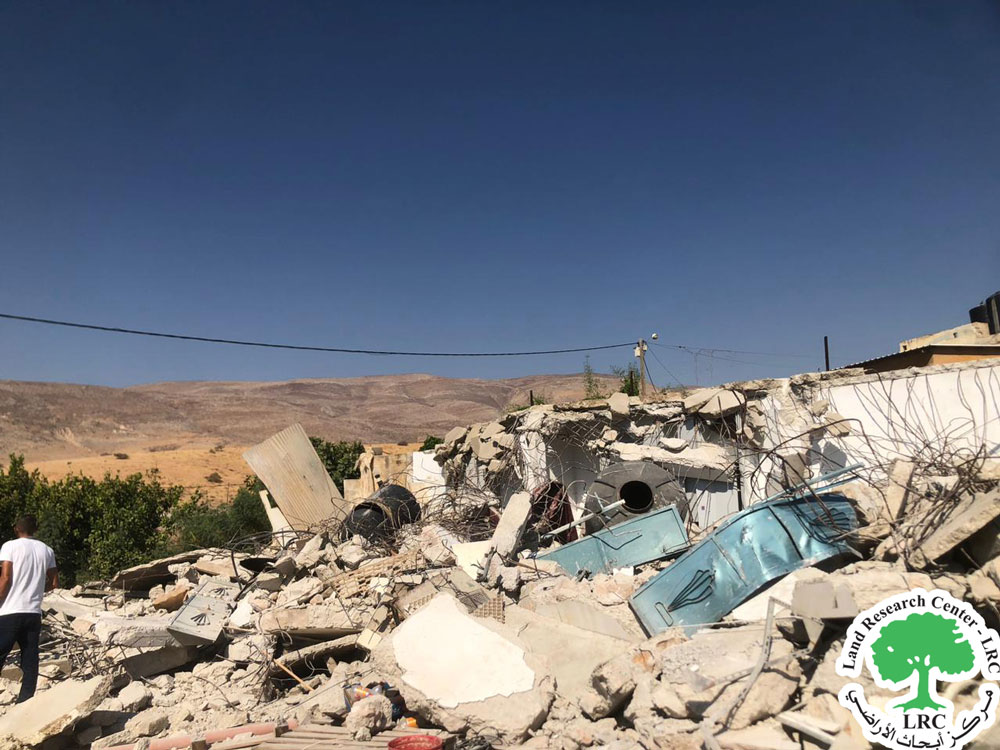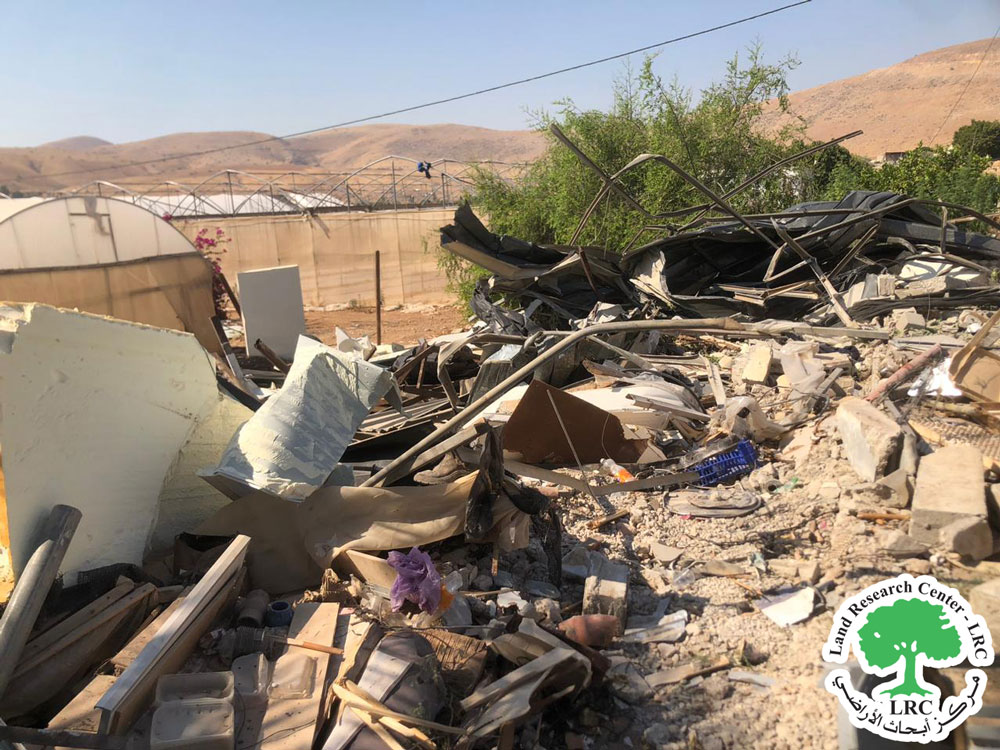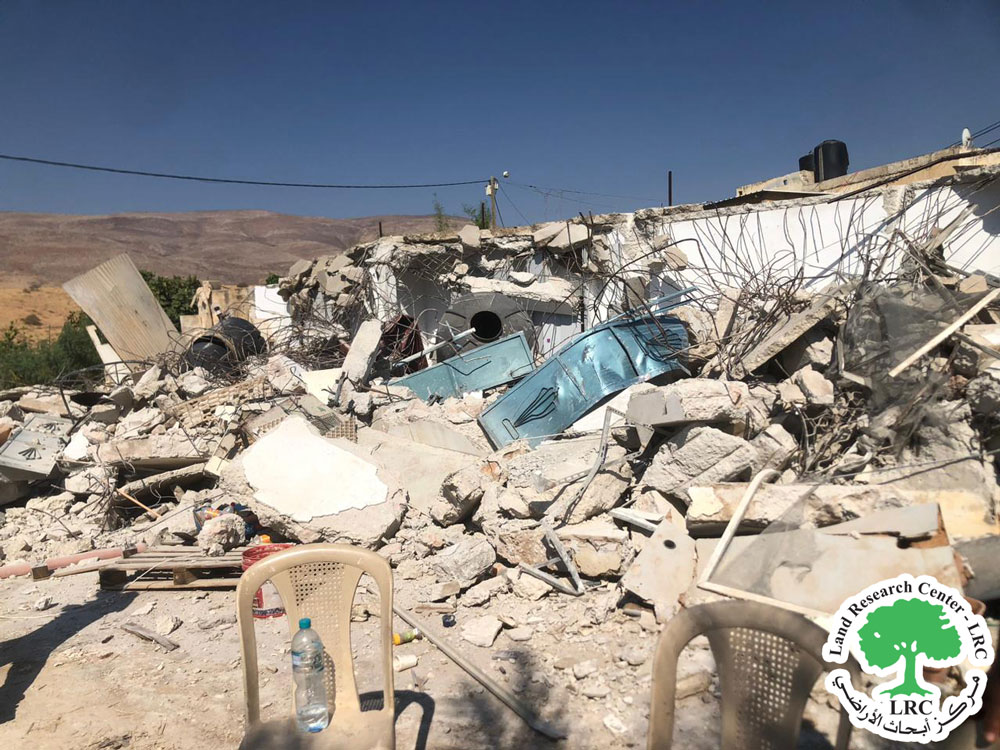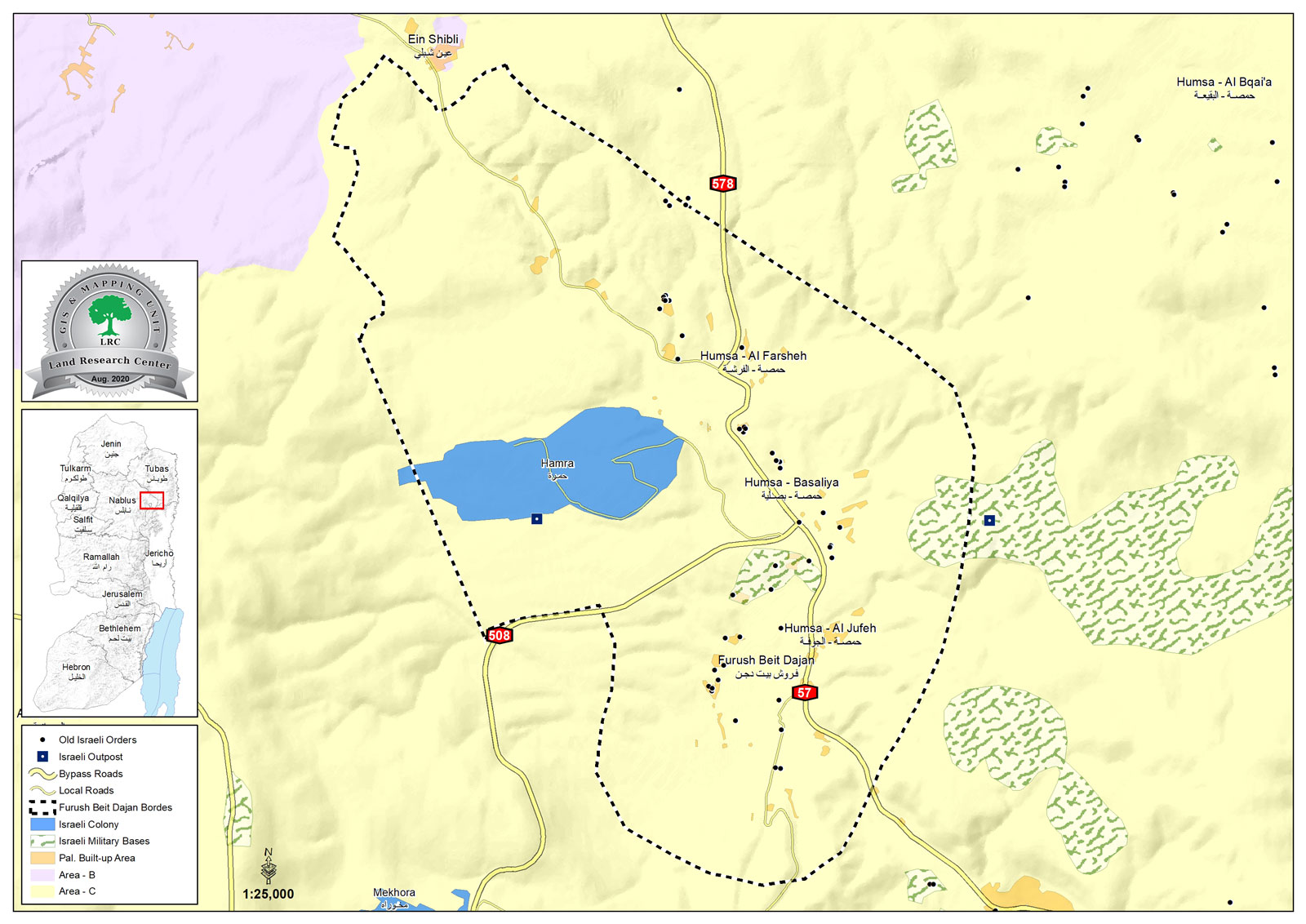The occupation demolishes a house and an agricultural facility in the village of Furush Beit Dajan/east of Nablus
- Violation: Demolition of a house and an agricultural structure.
- Location: Farush Beit Dajan Village / Nablus Governorate.
- Date of Violation: August 19, 2024.
- Perpetrator: Israeli Civil Administration.
- Affected Party: Farmer Amjad Shaker Saleh Haj Muhammad.
Description :
On the morning of Monday, August 19, 2024, Israeli occupation authorities carried out a demolition operation in Farush Beit Dajan Village, specifically in the "Khallet al-Fawla" area to the east of the village. They demolished a house and an agricultural structure (a livestock barn) belonging to Amjad Shaker Saleh Haj Muhammad, citing the reason for the demolition as building without a permit.
The occupation authorities demolished the entire house and barn, forcing the occupants to leave and endure exposure to the harsh sun. The house, which was 120 square meters and consisted of one floor, housed 6 individuals, including 3 females and 4 children. The agricultural structure, made of brick walls with a zinc roof, covered 60 square meters and was used for raising 24 sheep.
 |  |  |
Effects of the demolition of the house and the agricultural facility
Farmer Amjad Haj Muhammad informed the Land Research Center's researcher:
"Four years ago, I built the house to accommodate my family, noting that I had no other land to build on. Shortly after, in 2023, I received a notice to halt construction due to lack of permit. I filed a complete permit application along with the necessary documents, but the occupation authorities rejected it and insisted on demolishing the house entirely. The demolition has left my family homeless, and I have no means to build another house. I am now considering building a tent for shelter as I am unemployed and lack the funds to rebuild."
Farush Beit Dajan Village:
Farush Beit Dajan Village is located 25 km east of Nablus. It is bordered to the north by Ein Shibli and Tamoun, to the west by Beit Dajan and Al-‘Aqrabaniya, to the east by Tamoun, and to the south by Al-Jiftlik. The village had a population of 723 as of 2017. Its total area is 20,082 dunams, with 225 dunams designated as built-up area for the village. The occupation has confiscated 2,494 dunams of its land, as detailed below:
- The settlement of "Hamra," established in 1971, has seized 1,320 dunams with 188 settlers.
- The bypass roads have seized 703 dunams for the following roads: 57, 508, and 578.
- Military camps have taken 471 dunams.
- According to the Oslo Accords, the village area is classified as "Area C," under full Israeli control both administratively and militarily.
Targeting Livestock and Grazing Lands as a Means to Displace Palestinians:
The Israeli occupation and its settlers continue their longstanding policy of targeting grazing lands and livestock, employing various methods to undermine the Palestinian livestock sector, including:
Stealing sheep, spraying grazing lands with poisons and chemicals, shooting, running over and killing shepherds and their livestock, and demolishing and threatening barns.
Today, livestock face severe dehydration due to restrictions on accessing water sources. The occupation imposes strict limitations on accessing grazing lands and wells, prevents the digging of new wells, seizes small water tankers, and damages or poisons water wells, causing a near-total collapse of the livestock sector. This is part of a broader strategy to forcibly displace Palestinian communities and turn their lands into colonial reserves for settlement expansion.
According to direct field documentation from the Israeli Violations Monitoring Department at the Land Research Center, since the beginning of 2024, the occupation and its settlers have committed numerous violations against the livestock sector. The key incidents reported up to the preparation date of this report are as follows:
- 30 barns for raising sheep, housing 1,032 sheep, were demolished, forcing their owners to relocate. Some of these barns were deprived of grazing lands and water sources.
- 27 barns housing over 550 sheep were threatened.
- 24 Bedouin communities reliant on sheep farming were forcibly displaced due to repeated settler attacks since October 2023, coinciding with the onset of aggression against Gaza. The occupation has closed thousands of dunams of grazing lands and prevented Palestinian shepherds from accessing them, leading many Bedouins to sell their sheep due to the loss of water sources and grazing lands.
- 55 barns for raising sheep were attacked by settlers through demolition, burning, and vandalism.
- Settlers killed 270 sheep, stole 2,500 others, and assaulted 55 sheep. Thousands of sheep are suffering from severe dehydration due to the loss of water sources.
- Over 300 shepherds were directly attacked or expelled while tending their livestock.
مشروع: حماية الحقوق البيئية الفلسطينية في مناطق "ج" SPERAC IV - GFFO
Disclaimer: The views and opinions expressed in this report are those of Land Research Center and do not necessarily reflect the views or positions of the project donor; the Norwegian Refugee Council.
إخلاء المسؤولية: الآراء ووجهات النظر الواردة في هذا التقرير هي آراء ووجهات نظر مركز أبحاث الأراضي ولا تعكس بالضرورة وجهات نظر أو مواقف الجهة المانحة للمشروع؛ المجلس النرويجي. للاجئين

